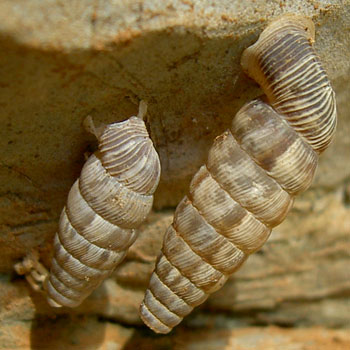About the research
The paper is about the (possible) introduction of an 'invasive' snail species during antiquity.
When introducing invasive species, relatively recent introductions are often considered. However, products and materials have been transported for thousands of years. For example, the Greeks and Romans transported large quantities of marble over the Mediterranean Sea. Much of that marble was extracted on the island of Thasos, in the north of the Aegean Sea.
The snail species Carinigera buresi has a remarkable distribution over isolated, widely dispersed areas in Greece. This is strange because these snails can move very little, and because all related species have a small and compact range. Carinigera buresi lives exclusively on limestone and marble rocks, and is found in large numbers in the old marble mines on the island of Thasos.
In the article, Dr. Dennis Uit de Weerd and Prof. Dr. Edmund Gittenberger examine the possibility that the species was moved across Greece in ancient times with marble transport. They do this by determining and dating the DNA relationship patterns within this species. The study reveals one very likely case of the species spreading via marble transport. However, such movements cannot explain the entire current range of the species.
Download
Download the article in Open Access.

